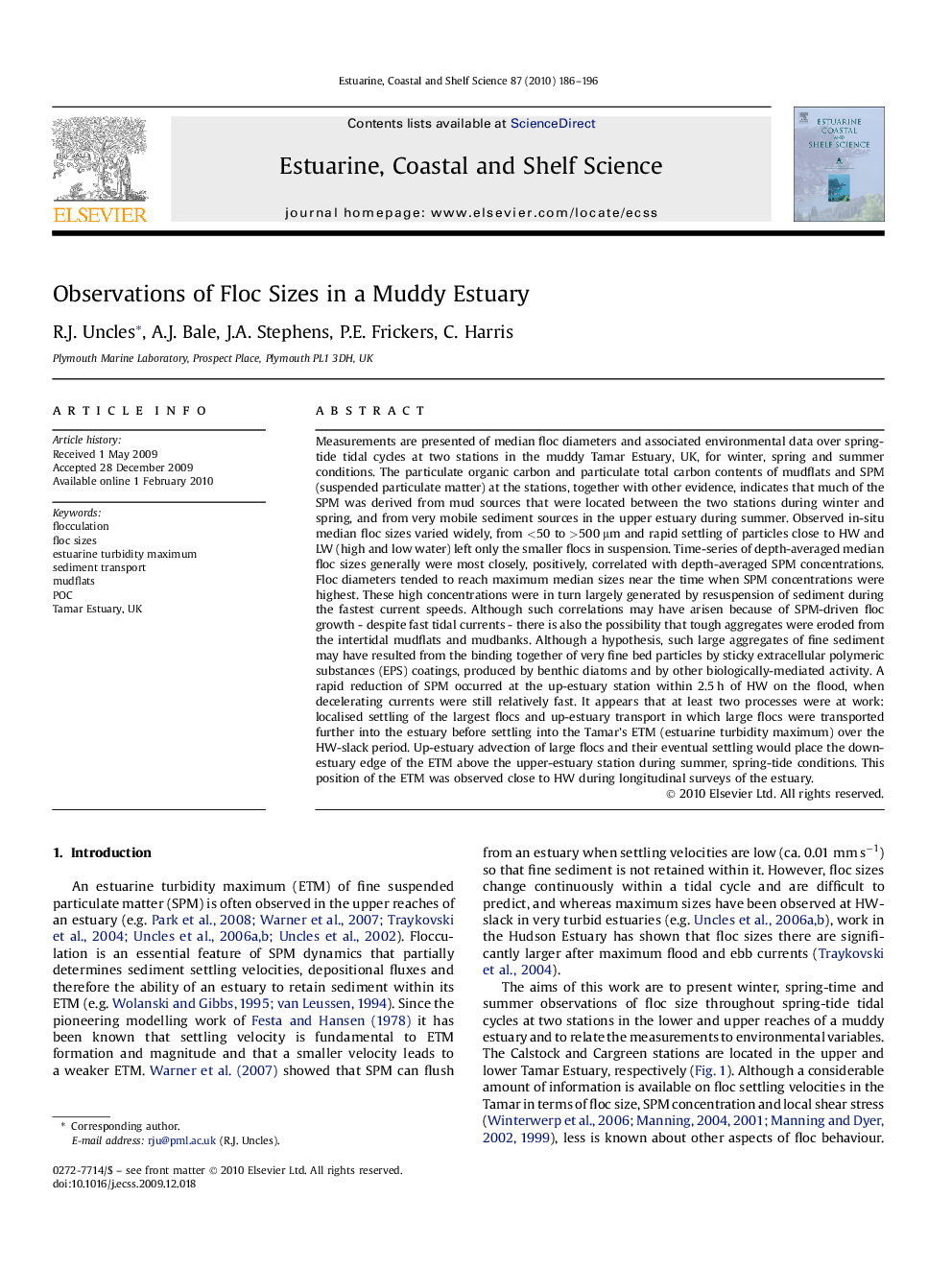| کد مقاله | کد نشریه | سال انتشار | مقاله انگلیسی | نسخه تمام متن |
|---|---|---|---|---|
| 4540983 | 1326702 | 2010 | 11 صفحه PDF | دانلود رایگان |

Measurements are presented of median floc diameters and associated environmental data over spring-tide tidal cycles at two stations in the muddy Tamar Estuary, UK, for winter, spring and summer conditions. The particulate organic carbon and particulate total carbon contents of mudflats and SPM (suspended particulate matter) at the stations, together with other evidence, indicates that much of the SPM was derived from mud sources that were located between the two stations during winter and spring, and from very mobile sediment sources in the upper estuary during summer. Observed in-situ median floc sizes varied widely, from <50 to >500 μm and rapid settling of particles close to HW and LW (high and low water) left only the smaller flocs in suspension. Time-series of depth-averaged median floc sizes generally were most closely, positively, correlated with depth-averaged SPM concentrations. Floc diameters tended to reach maximum median sizes near the time when SPM concentrations were highest. These high concentrations were in turn largely generated by resuspension of sediment during the fastest current speeds. Although such correlations may have arisen because of SPM-driven floc growth - despite fast tidal currents - there is also the possibility that tough aggregates were eroded from the intertidal mudflats and mudbanks. Although a hypothesis, such large aggregates of fine sediment may have resulted from the binding together of very fine bed particles by sticky extracellular polymeric substances (EPS) coatings, produced by benthic diatoms and by other biologically-mediated activity. A rapid reduction of SPM occurred at the up-estuary station within 2.5 h of HW on the flood, when decelerating currents were still relatively fast. It appears that at least two processes were at work: localised settling of the largest flocs and up-estuary transport in which large flocs were transported further into the estuary before settling into the Tamar's ETM (estuarine turbidity maximum) over the HW-slack period. Up-estuary advection of large flocs and their eventual settling would place the down-estuary edge of the ETM above the upper-estuary station during summer, spring-tide conditions. This position of the ETM was observed close to HW during longitudinal surveys of the estuary.
Journal: Estuarine, Coastal and Shelf Science - Volume 87, Issue 2, 10 April 2010, Pages 186–196